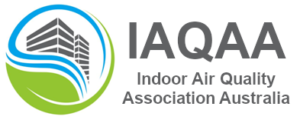Testing Buildings after Wild Fires / Bush Fires
The first step in an assessment strategy is to know the objective. Is it assessing contaminants associated with wildfire smoke that are indicators of site contamination, building contamination, occupant exposure, or all three? Will you just assess products of combustion or also include contaminants resulting from water damage? The second step is to select contaminants that can be associated with “condition”. Will the assessment be able to conclude if the building, contents, or occupant exposures require mitigation? The third step is to consider the ability of the sampling methods and the analytical methods that are being considered to differentiate between “condition”. Have the methods been “standardized”? Are there numerical guidelines or decision criteria available to interpret the results? These concepts will be discussed using examples from residential post-restoration wildfire inspections and additional samples from field inspections.
Dr Spurgeon – background around bush fires
Dr. Spurgeon was an Air Pollution Fellow at the University of Pittsburgh, where he received a multi-disciplinary doctorate degree from the Graduate School of Chemistry and the Graduate School of Public Health in 1972.
His work experience includes:
- National Bureau of Standards: Lead Paint Poisoning Program, original Three Cities Study
- CDC/ATSDR: Health Assessment Division
- US Public Health Service (DFOH): US EPA’s Laboratory Exposure Assessment Project
- FAA: Director, Combustion Toxicology Laboratory
During his work with the FAA, Dr. Spurgeon authored more than two dozen technical publications on the sampling, analysis, and toxicity of combustion products. He coordinated with various Fire Research Centers in the US while doing this work, worked closely with NASA to improve fire safety in launch capsules, and taught Fire Technology courses to Atlantic City, NJ fire dept. personnel. His primary interests are in promoting the adoption of assessment strategies, the use of validated sampling methods, and the use of standard data interpretation methods within the Indoor Environmental community.
